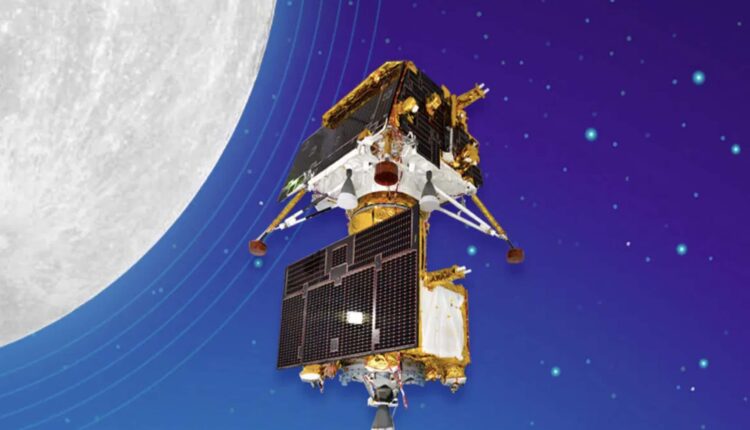The Ink of Independence & Swadeshi Soft Landing on the Moon
As Vikram, the lander for Chandrayan 3 soft-landed on the moon on the 23rd. August, India became one of four nations including the USA, Russia, and China who have successfully soft-landed on the moon. It was a moment of crowning glory in India’s tryst with the space program, which started with the launching of Arya Bhatt in 1975 with the assistance of the erstwhile USSR. It’s also a tribute to Atma Nirbhar Bharat Program , whose seeds of Swadeshi were sown by Mahatma Gandhi, when he gave a call to shun foreign goods by relying on domestic products. 21st July 1921 was a turning point when 1.5 lakh foreign clothes were burnt in Bombay, with a call to open Khadi spinning centers all over the country. Very little is known, however, about his Swadeshi obsession with Indian fountain pen and Swadesi ink.
The market for Indian ink and fountain pens in the 1930s was dominated by foreign companies. Gandhi who was writing constantly (his letters now archived as the Collected Works number in thousands) preferred the simple reed pen as he railed against foreign-made fountain pens. When Mr. Satish Dasgupta, chief chemist at Bengal Chemical was released from jail he met Gandhi, who told him not to participate in the non-cooperation movement but to manufacture swadeshi products, like ink for the country. For a fountain pen evangelist like Ganguly, Sulekha ink was not about selling a product, but a concept of swadeshi, that brings our kids closer to the stories about our culture and heritage, and which makes them conscious about our environment. The Mahatma was the first evangelist during our independence movement, who assiduously promoted indigenous products like Khadi, fountain pens, and ink. For him, Swadeshi is the soul of Swaraj.
After independence, the quest for import substitution and indigenization became the dominant public policy. However, instead of investing handsomely in research and development and improving our design capability in critical technology, Nehru took the easy way out of promoting technology transfer and license production by collaborating with the Soviet Union. The Atomic Energy segment and space programs, however, stood in splendid isolation, due to the pioneering leadership of visionaries like Homi Bhabha and Vikram Sarabhai, which was supported by the political leadership of Nehru, a votary of science and technology. In 1982 in the hands of their protégé Abdul Kalam the Integrated Missile Program took birth duly supported by the political leadership of Indira Gandhi. These three marquee programs in atomic energy, space, and missile development have put India’s pride of place in the comity of major global powers and have provided India with a high measure of self-reliance in the production of strategic products and repulsing our potential adversaries like Pakistan and China.
India’s three-stage nuclear power program was formulated by Homi Bhabha in the 1950s to secure the country’s long-term energy independence through the use of uranium & and thorium reserves found in abundance in the monazite sands of coastal regions of South India. India today is the leader in thorium-based research, second behind the USA in the research output of Thorium. The atomic energy of USA Hecker writes: India has the most technologically ambitious and space technology innovative nuclear energy program. No wonder, Bhabha’s vision to develop a nuclear bomb found its fruition when Buddha smiled on 18 May 1974 in the Pokhran desert. A series of nuclear bombs exploded again in May 1998. The invaluable political support of Indira Gandhi for the first test and of Bajpai for the second test must be acknowledged.
In India’s nuclear program, the Space program became an inextricable partner, as was the Missile program subsequently with the Space program. Both these programs were catapulted by two charismatic leaders of contrasting character, Bhaba and Sarabhai. Surmounting all odds, it was through the active assistance of the Soviet Union that India launched its first satellite, Arya Bhatt in 1975. It took ISRO seven years to develop Space Launching Vehicles (SLV), capable of putting 40 kg into 400 km orbit. Polar Satellite Launch Vehicles (PSLV) , developed later was a major shot in the arm in our space program. In 2003, when China sent humans into space, PM Bajpai urged scientists to develop technology and land humans on the moon. This was how the program to land on the moon got a booster. Chandrayan I was launched in 2008. Chandrayan III’s soft landing on 23rd August on the moon is the culmination of the wonderful space mission to make India’s space odyssey largely self-reliant.
Vikram Sarabhai, after whose name the lander Vikram has been named had aptly observed: If we are to play a meaningful role nationally and in the community of nations, we must be second to none in the advancement of advanced technology to solve real problems of man and society. Bhabha encouraged cutting-edge research to be bracketed with the USA in terms of research output in the field of thorium. In a country where our overall impact in front-end research on a global scale is rather insignificant, the Tata Institute of Fundamental Research (1948) founded by Bhabha and Sarabhai remains a shining totem of global excellence. Gandhi, Bhabha, Sarabhai, and Kalam seem to be that quartet that successfully inked the vision of a self-reliant India in great measure. The story of the soft landing on the moon demonstrates how Politics Science and technology can conspire to produce a heady cocktail; of hope, and self-esteem, in a cup Made in India. The indigenous ink for this remarkable script was conjured by Gandhi and our scientists have written the incredible pages.
The author was a financial advisor of Kalam

